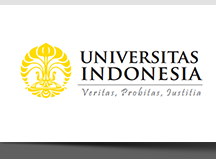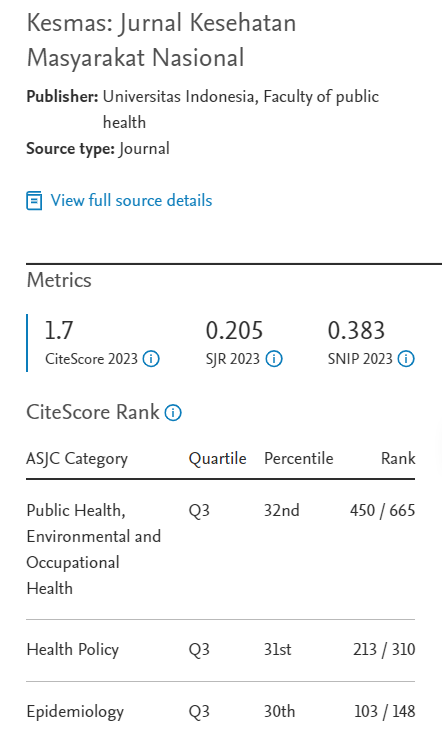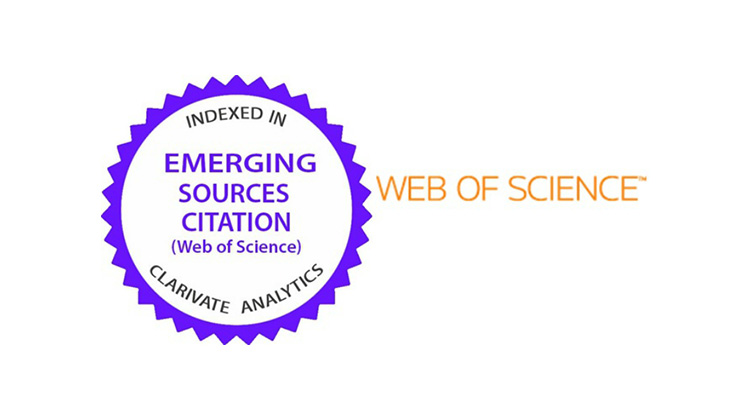Abstract
Understanding occupational health and safety (OHS) is essential for engineering students, especially in high-risk environments such as mechanical workshops, where unsafe practices can lead to accidents and injuries. Although Regulation Number 5 of 2018 from the Indonesian Ministry of Manpower mandates OHS implementation in all workplaces, students’ knowledge and behavior still fall short of the expected safety standards. This study aimed to measure students’ understanding of OHS, their basic knowledge of OHS law, and their behavior during workshop practicum activities. A cross-sectional research design was used, involving 203 students in State Polytechnic in Badung District, Indonesia. Data were collected through direct observation, surveys, and interviews. OHS understanding and legal knowledge were assessed using a test questionnaire, while OHS behavior was evaluated using a Likert-scale-based questionnaire. Data were analyzed using structural equation modeling at a 95% confidence level. The results indicated that combined OHS understanding and legal knowledge influence OHS behavior by 25.1%, with legal knowledge alone contributing only 1.8%, suggesting that knowledge of the law cannot shape behavior independently. Other contributing factors, such as engaging teaching methods and continuous monitoring, are needed.
References
1. Kementerian Ketenagakerjaan Republik Indonesia. Peraturan Menteri Ketenagakerjaan Nomor 5 Tahun 2018 Tentang Keselamatan dan Kesehatan Kerja Lingkungan Kerja. Jakarta: Kementerian Ketenagakerjaan Republik Indonesia; 2018.
2. Lax MB. Falling Short: The State’s Role in Workplace Safety and Health. New Solut J Environ Occup Heal Pol. 2020; 30 (1): 27-41. DOI: 10.1177/1048291120903116.
3. Schneid TD. Safety Law: Legal Aspects in Occupational Safety and Health. 1st ed. Boca Raton: CRC Press; 2023. DOI: 10.1201/9781351130998.
4. Shan D, Lippel K. Occupational Health and Safety Challenges From Employment-Related Geographical Mobility Among Canadian Seafarers on the Great Lakes and St. Lawrence Seaway. New Solut J Environ Occup Heal Pol. 2019; 29 (3): 371-396. DOI: 10.1177/1048291119870762.
5. Yang M, Wang Y, Hammer R, et al. Occupational health and safety management system and stock price crash risk. Int Rev Financ Anal. 2024; 93: 103141. DOI: 10.1016/j.irfa.2024.103141.
6. Mori T, Nagata T, Odagami K, et al. A prospective cohort study of perceived organizational support and occupational accidents and near-miss events among Japanese workers. J Safety Res. 2024; 89: 19-25. DOI: 10.1016/j.jsr.2024.01.002.
7. García-Mainar I, Montuenga VM. Risk self-perception and occupational accidents. J Safety Res. 2024; 88: 135-144. DOI: 10.1016/j.jsr.2023.11.001.
8. Yusuf M, Sudiajeng L, Suryawan KA, et al. Redesign of Ergonomic Worktables in Reinforced Concrete Sheet Works Reduce Ergonomic Risk Level. ScitePress Digital Library. Proceedings of the 5th International Conference on Applied Science and Technology on Engineering Science ICASTES; 2022. p. 370-374. DOI: 10.5220/0011806000003575.
9. Amoadu M, Ansah EW, Sarfo JO. Psychosocial work factors, road traffic accidents and risky driving behaviours in low-and middle-income countries: A scoping review. IATSS Res. 2023; 47 (2): 240-250. DOI: 10.1016/j.iatssr.2023.03.005.
10. Tamene A, Habte A, Endale F, et al. A Qualitative Study of Factors Influencing Unsafe Work Behaviors Among Environmental Service Workers: Perspectives of Workers, and Safety Managers: The Case of Government Hospitals in Addis Ababa, Ethiopia. Environ Health Insights. 2022; 16: 11786302221109356. DOI: 10.1177/11786302221109357.
11. Odlin D, Benson-Rea M, Sullivan-Taylor B. Student internships and work placements: approaches to risk management in higher education. High Educ. 2022; 83: 1409-1429. DOI: 10.1007/s10734-021-00749-w.
12. Nasrallah IM, El Kak AK, Ismaiil LA, et al. Prevalence of Accident Occurrence Among Scientific Laboratory Workers of the Public University in Lebanon and the Impact of Safety Measures. Saf Health Work. 2022;
13 (2): 155-162. DOI: 10.1016/j.shaw.2022.02.001. 13. Presiden Republik Indonesia. Undang-Undang Republik Indonesia Nomor 12 Tahun 2012 Tentang Pendidikan Tinggi. Jakarta: Pemerintah Pusat; 2012.
14. Hale A. From national to European frameworks for understanding the role of occupational health and safety (OHS) specialists. Saf Sci. 2019; 115: 435-445. DOI: 10.1016/j.ssci.2019.01.011.
15. Lornudd C, Frykman M, Stenfors T, et al. A champagne tower of influence: An interview study of how corporate boards enact occupational health and safety. Saf Sci. 2021; 143: 105416. DOI: 10.1016/j.ssci.2021.105416.
16. Sofri S, Reddy Prasad DM, Bin Azri MH, et al. Analysis of chemical engineering curriculum to improve process safety competency. Int J Occup Saf Ergon. 2023; 29 (2): 642-650. DOI: 10.1080/10803548.2022.2063499.
17. West R, Armao JE, Creedy DK, et al. Measuring effectiveness of cultural safety education in First Peoples health in university and health service settings. Contemp Nurse. 2021; 57 (5): 356-369. DOI: 10.1080/10376178.2022.2025876.
18. Nikolić V, Taradi J, Vukić T, et al. Occupational safety knowledge management in Slovenia, Croatia and Serbia. Int J Occup Saf Ergon. 2023; 29 (4): 1504-1514. DOI: 10.1080/10803548.2022.2154478.
19. Laroche E, Patoine MJ. Creation of an OHS knowledge portal: An action research. Int J Work Heal Manag. 2021; 14 (1): 50-63. DOI: 10.1108/IJWHM-09-2019-0112.
20. Güney G, Kahraman B. Implementation of the analytic hierarchy process (AHP) and Fine–Kinney method (FKM) against risk factors to determine the total cost of occupational health and safety precautions in environmental research laboratories. Int J Occup Saf Ergon. 2022; 28 (4): 26062622. DOI: 10.1080/10803548.2021.2010969.
21. Keptner KM, McCarthy K. Disruption of academic occupations during COVID-19: impact on mental health and the role of occupational therapy in tertiary education. World Fed Occup Ther Bull. 2020; 76 (2): 78-81. DOI: 10.1080/14473828.2020.1822575.
22. Uhrenholdt Madsen C, Vester Thorsen S, Hasle P, et al. Differences in occupational health and safety efforts between adopters and non-adopters of certified occupational health and safety management systems. Saf Sci. 2022; 152: 105794. DOI: 10.1016/j.ssci.2022.105794.
23. Rodrigues MA, Sá A, Masi D, et al. Occupational Health & Safety (OHS) management practices in micro- and small-sized enterprises: The case of the Portuguese waste management sector. Saf Sci. 2020; 129: 104794. DOI: 10.1016/j.ssci.2020.104794.
24. Alqahtani FM, Alqahtani NS, Algarni FS, et al. Development of an educational program for occupational health and safety in Saudi Arabia. J Eng Res; 2024. DOI: 10.1016/j.jer.2024.04.018.
25. Odonkor ST, Sallar AM. Occupational health and safety knowledge, attitudes and practices among healthcare workers in Accra Ghana. Sci African. 2024; 24: e02130. DOI: 10.1016/j.sciaf.2024.e02130.
26. Althubaiti A. Sample size determination: A practical guide for health researchers. J Gen Fam Med. 2023; 24 (2): 72-78. DOI: 10.1002/jgf2.600.
27. Summers D, Harries J, Kirby N, et al. The validity and measurement equivalence of a brief safety climate questionnaire across casual and permanent workers. Saf Sci. 2023; 159: 106034. DOI: 10.1016/j.ssci.2022.106034.
28. Arifin K, Ali MXM, Abas A, et al. The influence of hazard control and prevention toward safety behaviors and safety outcomes in coal-fired power plants using PLS-SEM. J Safety Res. 2023; 86: 376-389. DOI: 10.1016/j.jsr.2023.07.017.
29. Hansen BG, Olsson UH. Specification Search in Structural Equation Modeling (SEM): How Gradient Component-wise Boosting can Contribute. Struct Equ Model A Multidiscip J. 2022; 29 (1): 140-150. DOI: 10.1080/10705511.2021.1935263.
30. Dash G, Paul J. CB-SEM vs PLS-SEM methods for research in social sciences and technology forecasting. Technol Forecast Soc Change. 2021; 173: 121092. DOI: 10.1016/j.techfore.2021.121092.
31. Kim MJ, McKenna H, Park CG, et al. Global assessment instrument for quality of nursing doctoral education with a research focus: Validity and reliability study. Nurse Educ Today. 2020; 91: 104475. DOI: 10.1016/j.nedt.2020.104475.
32. Bom JAM, Voormolen DC, Brouwer WBF, et al. Construct Validity, Reliability, and Responsiveness of the 10-Item Well-being Instrument for Use in Economic Evaluation Studies. Value Heal. 2024; 27 (7): 871-878. DOI: 10.1016/j.jval.2024.02.014.
33. Wilbanks DW, Abulhassan Y, Wachter JK. Reconciling occupational safety and health (OSH) Master’s of Science curricula with employer demands. Saf Sci. 2023; 161: 106059. DOI: 10.1016/j.ssci.2023.106059.
34. Brown GD. OHS Initiative for Workers and Community: Innovative Bangladesh training program shows the importance and impact of workerfocused, grassroots-level OHS projects. J Occup Environ Hyg. 2022; 19 (3): 123-128. DOI: 10.1080/15459624.2022.2025999.
35. Edem MJ, Akpan EU, Pepple NM. Impact of Workplace Environment on Health Workers. Occup Med Heal Aff. 2017; 5 (2): 261. DOI: 10.4172/2329-6879.1000261.
36. Yusuf M, Suarbawa IKGJ, Santiana IMA. Factors Affecting the Workload of Horticultural Farmers in Agrotourism Areas. Multidiscip Sci J. 2024; 7 (3): e2025136. DOI: 10.31893/multiscience.2025136.
37. Yusuf M, Irwanti ND. Application of Occupational Health and Safety (K3) in Agrotourism. IEOM Society International. Proceedings of the Second Asia Pacific International Conference on Industrial Engineering and Operations Management. 2021 Sep 14-16. p. 3734-3741.
38. Sudiajeng L, Tarwaka T, Sutapa K, et al. Ergonomic tetrapod reduces the MSDs risk and productivity of steel-bar assembly for reinforcement concrete beams. Int Res J Eng IT Sci Res. 2022; 9 (1): 1-13. DOI: 10.21744/irjeis.v9n1.2255.
39. Kementerian Ketenagakerjaan Republik Indonesia, International Labour Organization. Peraturan Ketenagakerjaan. Jakarta: Kementerian Ketenagakerjaan Republik Indonesia, International Labour Organization; 2005.
40. Yusuf M, Lokantara WD, Santiana IMA, et al. The Effect of Overtime Work On Family Social Aspects. Atlantis Press. Proceedings of the International Conference on Science and Technology (ICST 2018); 2018. p. 500-503. DOI: 10.2991/icst-18.2018.104.
Recommended Citation
Yusuf M , Suarbawa I , Dewi N ,
et al.
Understanding Occupational Health and Safety Regulations and the Influence on Students' Behavior in Practical Workshops.
Kesmas.
2025;
20(2):
95-103
DOI: 10.7454/kesmas.v20i2.1628
Available at:
https://scholarhub.ui.ac.id/kesmas/vol20/iss2/2
Included in
Occupational Health and Industrial Hygiene Commons, Public Health Education and Promotion Commons







